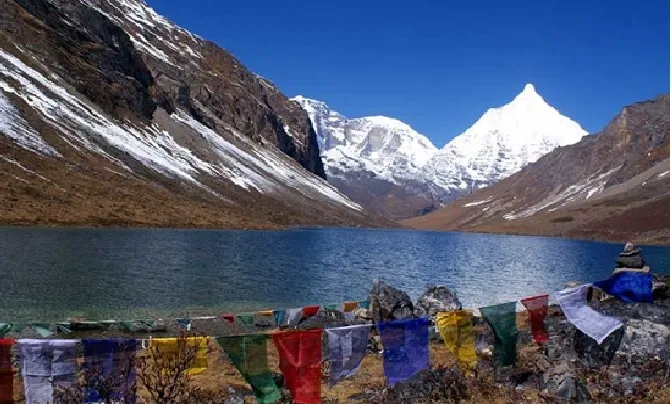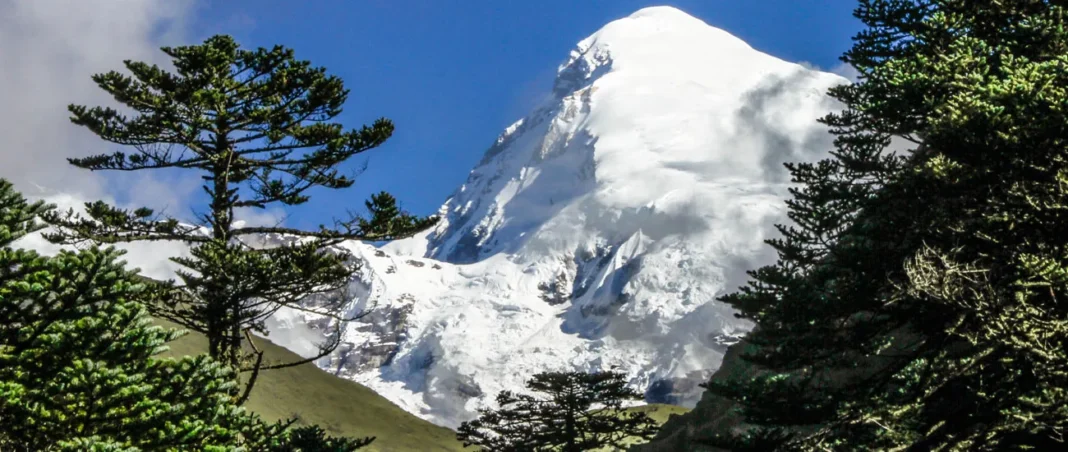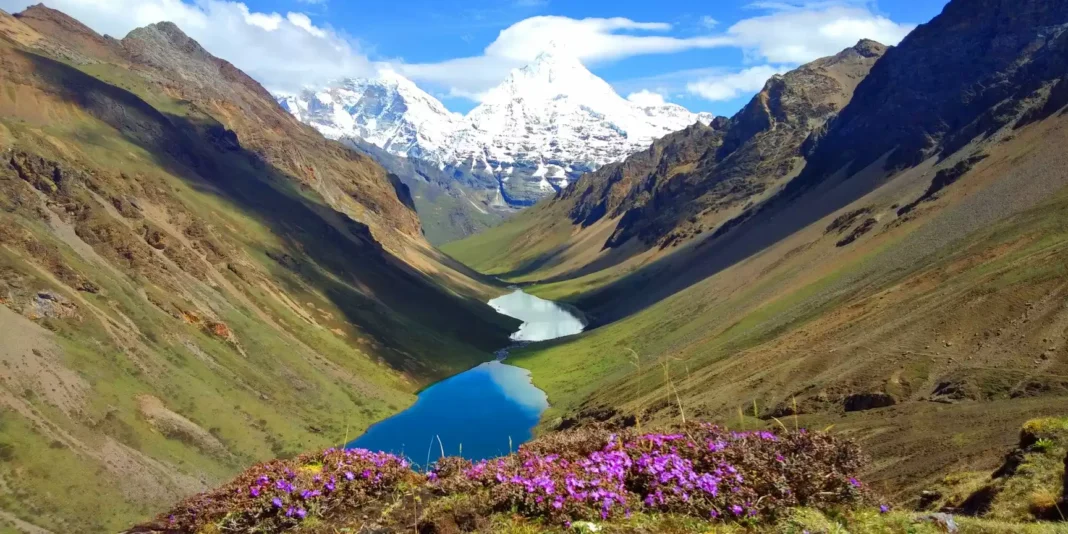Jomolhari, a majestic peak nestled in the heart of Bhutan, is more than just a mountain. Revered as a sacred abode of deities, this Himalayan giant is shrouded in mystique and spirituality. Its pristine glaciers, dramatic landscapes, and challenging trekking routes have captured the imagination of adventurers and pilgrims alike.
Jomolhari, Bhutan: A Sacred Mountain in the Himalayas
Jomolhari, also known as Chomolhari, holds a special place in Bhutanese culture and religion. It is believed to be the abode of Jomo, the protective female deity of the region. The mountain is adorned with prayer flags and chortens, symbols of devotion and reverence. Locals often embark on pilgrimages to Jomolhari, seeking blessings and spiritual fulfillment.
Trekking in Bhutan: Conquering Jomolhari’s Trails
For trekking enthusiasts, Jomolhari offers a challenging yet rewarding adventure. Several trekking routes wind through lush valleys, alpine meadows, and rocky terrain, culminating in breathtaking views of the snow-capped peak. The Jomolhari Trek is a popular choice, taking trekkers through diverse landscapes and offering glimpses of rare Himalayan wildlife.
Jangothang Base Camp: Gateway to Jomolhari
One of the highlights of this trek is the Jangotang base camp, located at the base of the mountain. This scenic campsite offers stunning views of Jomolhari and its surrounding peaks, making for a truly unforgettable experience.
A Photographer’s Paradise
Jomolhari’s dramatic landscapes are a photographer’s dream. The interplay of light and shadow on the snow-capped peak, the vibrant prayer flags fluttering in the wind, and the serene valleys bathed in golden sunlight offer endless opportunities for capturing stunning images. Whether you’re a seasoned photographer or a casual shutterbug, Jomolhari’s beauty will leave you in awe.
Biodiversity and Conservation
Jomolhari is not only a spiritual and scenic wonder, but also a hotbed of biodiversity. The mountain’s diverse ecosystems support a variety of flora and fauna, including rare species such as snow leopards, blue sheep and Himalayan black bears. Bhutan’s commitment to conservation ensures that natural treasures remain protected for future generations.
Planning Your Jomolhari Adventure
If you’re planning a trek to Jomolhari, it’s essential to prepare well in advance. The trek requires a good level of physical fitness and acclimatization to high altitudes. It’s recommended to book your trek through a reputable tour operator who can provide experienced guides, porters, and all the necessary logistics.
The best time to trek to Jomolhari is during the spring (March-May) and autumn (September-November) seasons when the weather is mild and the skies are clear. During these months, you’ll be rewarded with spectacular views of the mountain and its surroundings.
Beyond Jomolhari
While Jomolhari is undoubtedly the star attraction, there’s much more to explore in the Paro Valley. Visit the iconic Tiger’s Nest Monastery, perched precariously on a cliffside, or immerse yourself in the rich cultural heritage of Paro town. The valley is also home to several traditional villages where you can experience the warm hospitality of the Bhutanese people.
In Conclusion
It is a natural wonder that goes beyond just sightseeing. It’s a spiritual journey, an adventurous trek and a photographer’s paradise all rolled into one. Whether you’re looking for spiritual enlightenment, physical challenges or simply breathtaking scenery, Jomolhari promises an unforgettable experience. So pack your bags, lace up your boots and take a trip to this Himalayan paradise.







